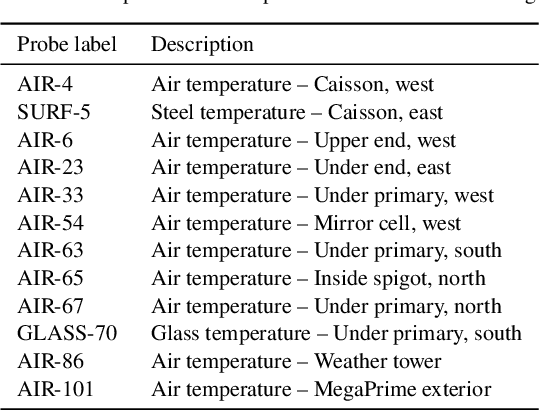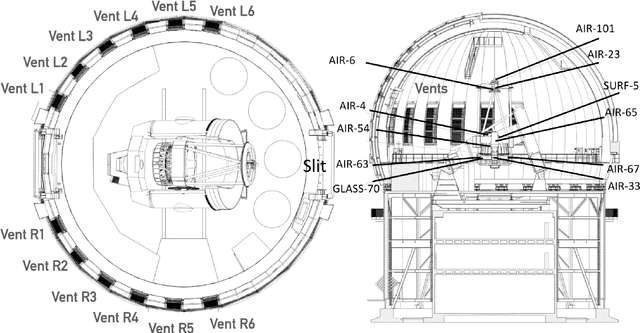Kanoa Withington
Uncertainty-Aware Learning for Improvements in Image Quality of the Canada-France-Hawaii Telescope
Jun 30, 2021



Abstract:We leverage state-of-the-art machine learning methods and a decade's worth of archival data from the Canada-France-Hawaii Telescope (CFHT) to predict observatory image quality (IQ) from environmental conditions and observatory operating parameters. Specifically, we develop accurate and interpretable models of the complex dependence between data features and observed IQ for CFHT's wide field camera, MegaCam. Our contributions are several-fold. First, we collect, collate and reprocess several disparate data sets gathered by CFHT scientists. Second, we predict probability distribution functions (PDFs) of IQ, and achieve a mean absolute error of $\sim0.07''$ for the predicted medians. Third, we explore data-driven actuation of the 12 dome ``vents'', installed in 2013-14 to accelerate the flushing of hot air from the dome. We leverage epistemic and aleatoric uncertainties in conjunction with probabilistic generative modeling to identify candidate vent adjustments that are in-distribution (ID) and, for the optimal configuration for each ID sample, we predict the reduction in required observing time to achieve a fixed SNR. On average, the reduction is $\sim15\%$. Finally, we rank sensor data features by Shapley values to identify the most predictive variables for each observation. Our long-term goal is to construct reliable and real-time models that can forecast optimal observatory operating parameters for optimization of IQ. Such forecasts can then be fed into scheduling protocols and predictive maintenance routines. We anticipate that such approaches will become standard in automating observatory operations and maintenance by the time CFHT's successor, the Maunakea Spectroscopic Explorer (MSE), is installed in the next decade.
 Add to Chrome
Add to Chrome Add to Firefox
Add to Firefox Add to Edge
Add to Edge